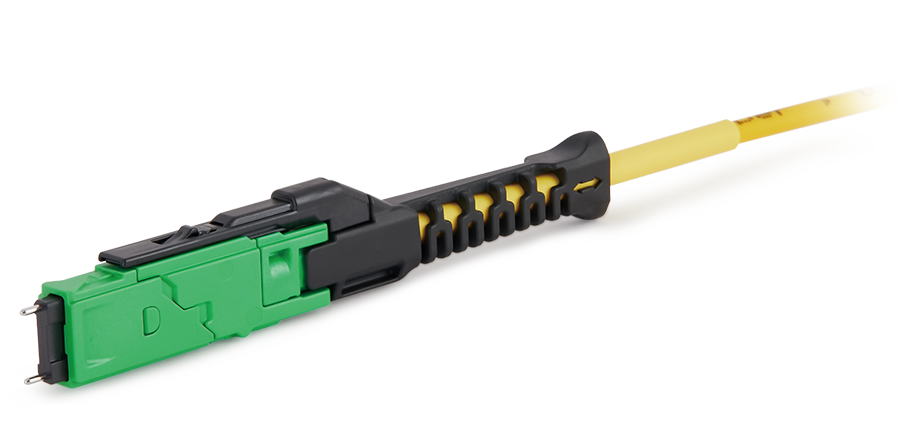As we stand at the forefront of the Fourth Industrial Revolution, the demand for faster, more reliable, and scalable communication networks have never been greater. Fiber optic technology has been a cornerstone of this transformation, enabling the seamless transmission of vast amounts of data over long distances with minimal signal loss. Today, I am delighted to discuss some of the groundbreaking developments that are currently at the forefront of fiber optic communications research.
Increased Data Rates and Bandwidth: One of the most notable advancements in fiber optic ferrule is the relentless pursuit of higher data rates and greater bandwidth. Researchers and engineers are exploring innovative ways to push the limits of current systems. The introduction of advanced modulation formats, such as quadrature amplitude modulation (QAM), combined with coherent detection techniques, has significantly increased the achievable data rates, allowing for multi-terabit-per-second transmission over a single optical fiber.
Space Division Multiplexing (SDM): To address the growing demand for increased capacity, researchers are exploring the potential of Space Division Multiplexing (SDM), a paradigm shift that involves using multiple spatial channels within a single optical fiber. By exploiting multiple cores or modes within an optical fiber, SDM holds the promise of exponentially increasing the capacity of existing fiber optic networks.
Fiber Nonlinearity Mitigation: As data rates increase, nonlinear effects become more pronounced, leading to challenges such as signal distortion and degradation. Addressing these issues is crucial for maintaining signal integrity. Advanced digital signal processing techniques, such as digital nonlinearity compensation, are being developed to mitigate these effects and enhance the overall performance of fiber optic communication systems.
Flexibility and Versatility: The demand for flexible and versatile communication networks is driving research into novel fiber designs and materials. Flexible fibers that can be easily bent and routed without sacrificing performance are gaining attention. Additionally, the integration of fibers with emerging technologies, such as stretchable electronics, opens up new possibilities for applications in areas like wearable technology and healthcare.
Advancements in Fiber Manufacturing: In parallel with developments in communication technology, there have been significant strides in the manufacturing of optical fibers. Improved fabrication techniques, such as advanced drawing processes and new materials, contribute to the production of fibers with reduced losses and enhanced performance. These advancements are vital for achieving the ambitious goals set for future communication networks.
Security and Quantum Communication: With the increasing importance of secure communications, the integration of quantum technologies with fiber optic networks is gaining momentum. Quantum key distribution (QKD) is a promising approach to achieving unbreakable encryption, and researchers are working towards the practical implementation of quantum communication systems within existing fiber infrastructures.
Energy Efficiency and Sustainability: As the global focus on sustainability intensifies, there is a growing emphasis on developing energy-efficient communication technologies. Researchers are exploring ways to reduce the power consumption of optical networks through innovations in transceiver design, network architectures, and energy-aware routing algorithms.
In conclusion, the field of fiber optic connection technology is undergoing a period of remarkable innovation and progress. The collaborative efforts of researchers, engineers, and industry partners are driving the evolution of communication networks towards unprecedented levels of speed, capacity, and efficiency. As we continue to explore these frontiers, it is essential to remain committed to the principles of collaboration, knowledge sharing, and responsible innovation to ensure a connected future that benefits society as a whole.

 Fiber Optic Flex Circuit (FOFC)
Advanced Simulation & Optimization, High Positioning Accuracy, Flexible Customization, Rigorous Reliability Testing
Fiber Optic Flex Circuit (FOFC)
Advanced Simulation & Optimization, High Positioning Accuracy, Flexible Customization, Rigorous Reliability Testing MDC Solution
US Conec's MDC connector is a Very Small Form Factor (VSFF) duplex optical connector, expertly designed for terminating single-mode and multimode fiber cables with diameters up to 2.0mm.
MDC Solution
US Conec's MDC connector is a Very Small Form Factor (VSFF) duplex optical connector, expertly designed for terminating single-mode and multimode fiber cables with diameters up to 2.0mm. MMC Solution
US Conec's Very Small Form Factor (VSFF) multi-fiber optical connector that redefines high-density connectivity with its cutting-edge TMT ferrule technology and intuitive Direct-Conec™ push-pull boot design.
MMC Solution
US Conec's Very Small Form Factor (VSFF) multi-fiber optical connector that redefines high-density connectivity with its cutting-edge TMT ferrule technology and intuitive Direct-Conec™ push-pull boot design. EN
EN
 jp
jp  fr
fr  es
es  it
it  ru
ru  pt
pt  ar
ar  el
el  nl
nl 



_and_High-Reflection_(HR)_Optical_Coatings.webp)
